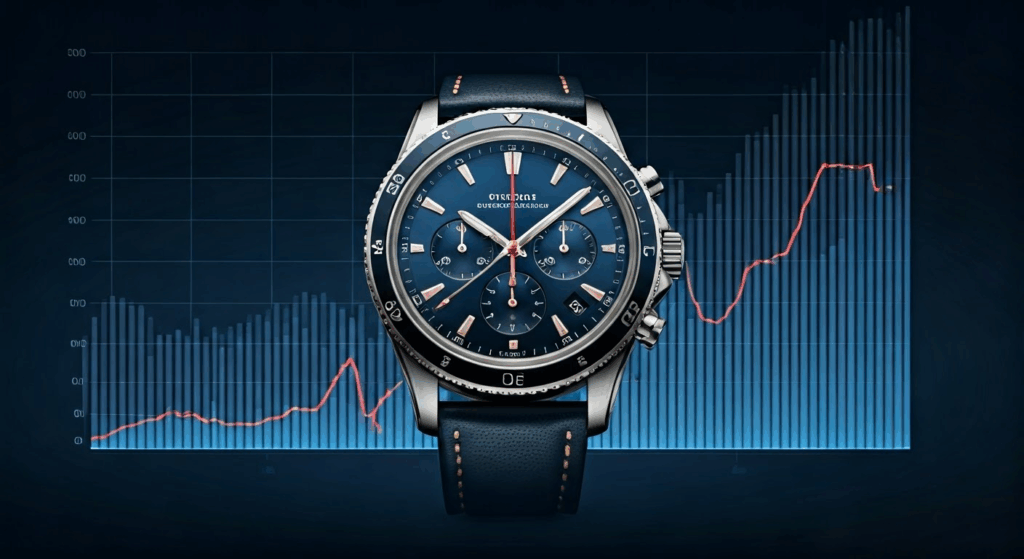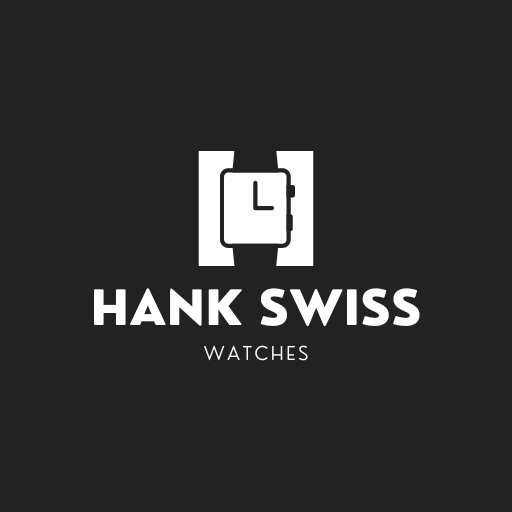
Key Highlights
- The United States will impose a 31% tariff on Swiss watch imports starting April 9, 2025, significantly impacting pricing.
- Swiss watches dominate the U.S. luxury watch market, making it the largest importer globally since 2021.
- Retail prices are expected to increase in this key market, with costs passed on to U.S. consumers, creating potential pricing ripple effects.
- Watch brands may adjust manufacturing strategies and marketing due to higher tariffs and disrupted supply chains.
- Consumers could shift purchasing behaviors, favoring budget or pre-owned luxury watches amidst rising costs.
Introduction
The complicated watch industry is facing more challenges as people worry about the economy. The United States, a key player in bringing in Swiss watches, will start a big 31% tariff on April 9, 2025. This change will disturb the current situation for luxury watchmakers and watch companies, retailers, and American consumers. What will this mean for a market known for its heritage and uniqueness? This blog will look at how these tariffs will affect pricing, manufacturing, consumer behavior, and the future of the luxury watch market in the U.S.
Overview of Current US Tariffs on Watches

This increase in fees will have a big impact. Swiss watches are known for their quality and luxury, and they make up a large part of the U.S. market, which is one of the largest markets for these luxury items. With these high price hikes, both retailers and customers are going to feel the strain. Since the U.S. is the largest importer of Swiss watches in the world, prices for these luxury items are expected to rise, leading to many changes in the watch industry.
Historical Context of Tariffs in the Watch Industry
Looking back, tariffs have always impacted the watch industry, particularly the impact of the tariffs on luxury watches. Luxury watches, especially Swiss imports, were important because of their quality and uniqueness. For many years, Swiss watch exports to the U.S. had moderate tariffs. This helped American buyers access them. But trade disputes sometimes increased the tariffs.
In the 20th century, Swiss watches became leaders over competitors like Japan and Germany, even with changing taxes. Well-known brands like Rolex and Omega adapted to these shifts by using smart pricing and offering limited-edition models. They found a way to be seen as both affordable and prestigious.
Besides tariffs, political factors like trade deficits and protectionist policies also affected U.S.-Swiss trade. Recently, in 2024, Switzerland removed industrial tariffs, momentarily lowering export costs for the industry. Now, Swiss brands face new challenges with the 31% tariff structure in place. This change reflects a shift similar to those seen in the past.
Recent Changes in Tariff Policies
The tariff situation for the Swiss watch industry has changed a lot. Recent U.S. trade rules have set “Liberation Day” tariffs. This includes a 10% general duty and a 31% tax aimed at Switzerland. These steps are based on claims that Switzerland has a 61% tariff on U.S. exports, which creates an unfair balance. However, Switzerland says that 99% of U.S. goods do not have any duty.
These new tariffs come during times when Swiss export values and retail value are changing. In January 2025, there was a positive sign with a 4.1% increase in U.S. shipments. But in the next month, those shipments dropped by 8.2%, which shows possible market problems. The U.S. luxury watch industry, being Switzerland’s largest export market, now has to deal with more pressure to adjust.
For watch brands, these tariffs, including the baseline tariff, are based on the values when importing, not the retail prices. This means the cost impact can be different for various types of products. These changes create challenges for manufacturers and retailers. They need to find quick ways to lessen losses before April 2025.
Effects on Watch Manufacturers and Brands

American retailers and their retail partners are having problems too. Fewer people might visit stores since watches are getting more expensive. This situation may force brands to change their marketing plans or find better ways to set prices in different areas. These changes are making everyone rethink how they do business.
Adjustments in Manufacturing Strategies
Swiss watchmakers are looking at new ways to make their products because of rising import duties. One method they are using is to improve supply chains. This helps them manage production costs better. Brands might also think about making parts locally to depend less on imports from outside Switzerland.
A table shows possible supply chain strategies:
| Strategy | Impact on Brands |
|---|---|
| Localisation of Components | Reduces sensitive imports due to tariffs and cuts production costs. |
| Diversification of Sources | Lessens reliance on areas with high tariffs. |
| Regionalized Manufacturing | Creates U.S.-based assembly to avoid specific duties. |
Manufacturers might also use automation and modular methods to boost efficiency while keeping quality high. For well-known brands, this means they can maintain their quality while adjusting to market changes. The challenge is to ensure that these new manufacturing strategies follow the brand’s values.
Impact on Brand Pricing and Marketing
Tariff costs affect the prices of watches and how brands market themselves. As these costs change, new prices will show higher import duties. For example, an Omega Seamaster or Tudor Black Bay that costs $10,000 might go up to $11,000 or more. To keep customer loyalty, brands need to communicate these changes effectively.
Brands can also create limited-edition models specifically for the U.S. market to support higher prices. In marketing, they might use influencers, celebrity partners, and special events in main stores to manage how customers feel about prices. Moreover, they aim to make prices more consistent around the world.
The secondary market offers a different choice for smart buyers looking for better deals as some people move away from high retail prices in the primary market. Going forward, Swiss brands must balance price increases, effective marketing, and keeping their customers.
Consumer Response to Increased Prices
Higher tariffs lead to price increases, affecting what people choose to buy in the watch market. Wealthy buyers might be okay with paying more for luxury items. However, customers looking for entry-level watches are likely to look for cheaper options. This might make some customers switch from their favorite Swiss watch brands as higher prices change their views on value.
For fans in the U.S., this could mean checking out pre-owned markets or choosing lower-priced brands that still look good and work well. This search for options helps create a wider market while focusing more on affordability rather than exclusivity for everyday buyers.
Shifts in Consumer Purchasing Behavior
Your buying choices affect different industries. So, how will shoppers in the U.S. change? People who care about prices might choose second-hand models or look at other options like Japanese brands such as Grand Seiko, especially with costs going up. Buying online might grow, giving people the chance to find cheaper products.
At the same time, wealthy collectors may keep buying, seeing Swiss imports as valuable investments, even if prices are high. There seems to be a change in culture, putting more emphasis on careful collecting instead of buying on a whim. Brands need to adjust their offers to meet the needs of these two different groups.
Younger buyers, often influenced by social media, are pushed to look for good deals on budget models and microbrands during this economic shift. The way people shop is changing, which really impacts brand marketing and second-hand markets.
Demand for Luxury vs. Budget Watches
Price changes are important in Swiss watch markets. They affect how people buy luxury items compared to more affordable ones. Higher tariffs raise the prices of luxury watches, which pushes buyers to choose cheaper options, like entry-level or mid-range models.
New brands entering the watchmaking scene, such as Nomos, may receive more attention in the U.S. Meanwhile, traditional Swiss brands might focus on the secondary market to keep their exclusivity. In this space, pre-owned Rolex watches become a reliable choice for long-term buyers.
Whether high-end watches or budget-friendly designs are more popular in the future will depend on how buyer feelings change—not just on the prices suggested by manufacturers (MSRP).
Conclusion
The changing tariffs in the watch industry affect manufacturers, brands, and consumers a lot. Tariffs can change how much it costs to make watches and how brands set their prices, including the rising cost of the tariff. Watch brands need to adjust to stay competitive and meet the changing tastes of customers. More people are buying luxury and budget watches, so businesses must pay attention to these market shifts. It is important for everyone, both in the industry and for customers, to understand how tariffs impact prices and what products are available. Keep up with these changes to make smarter choices when buying watches.
Frequently Asked Questions
How have recent tariffs affected watch prices?
Recent tariffs have raised Swiss watch prices a lot. The new tariff can add up to 31%. For example, the retail price of the Rolex Land-Dweller went from $16,100 to about $17,900. Vasu Kulkarni, also known as the NYC Watch Guy, shared his views on Instagram. U.S. consumers are now dealing with stretched budgets because of these price increases.
Will there be a shift towards more American-made watches?
Trade policies that increase duties on Swiss products may lead people to consider American-made watches more seriously. Higher prices and a preference for affordable options make brands like Hamilton and Shinola more appealing. With political and economic conditions in flux, making watches at home can help save costs and lessen reliance on unstable international products.
What can consumers expect in terms of warranty and services?
Swiss brands can offer special warranties and services for different areas to help deal with tariffs. When you buy models sold only in the U.S., you get great support for your purchase. Luxury brands like Rolex want to keep customers feeling secure. They focus on providing excellent experiences after the purchase, especially through their franchise networks.

Leave a Reply